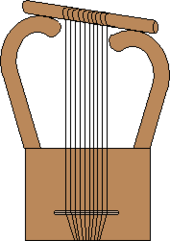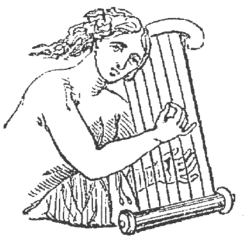Nevel (instrument)
|
Ancient Nevel (Harp) | |
| Classification | String instrument |
|---|---|
| Related instruments | |

Schematic drawing of an ancient kinnor

Detail of the "Peace" panel of the Standard of Ur showing lyrist, excavated from the same site as the Lyres of Ur.
The nevel or nebel (Hebrew: נֵ֤בֶל nêḇel) was a stringed instrument in use by the ancient Hebrew people. The Greeks referred to it as the nabla (νάβλα, cf. Latin nabilium).[1] Much conjecture has been put forth on its exact nature, but it was probably not a standardized instrument. Most hold it to be a form of harp, or psaltery. The King James Version renders the word into English as psaltery or viol, and the Book of Common Prayer renders it lute.[2] The word nevel means harp in modern Hebrew.
See also
References
This article is issued from Wikipedia - version of the 3/9/2016. The text is available under the Creative Commons Attribution/Share Alike but additional terms may apply for the media files.

